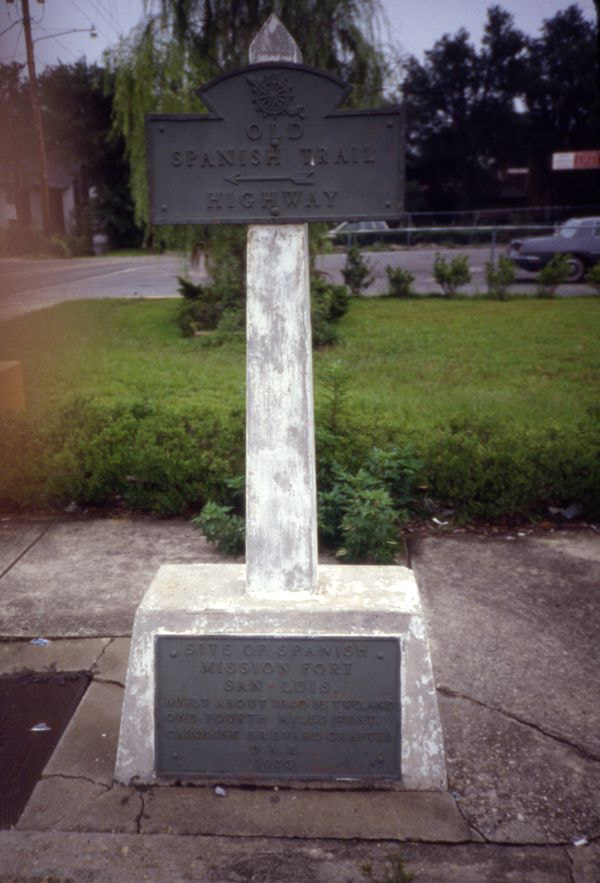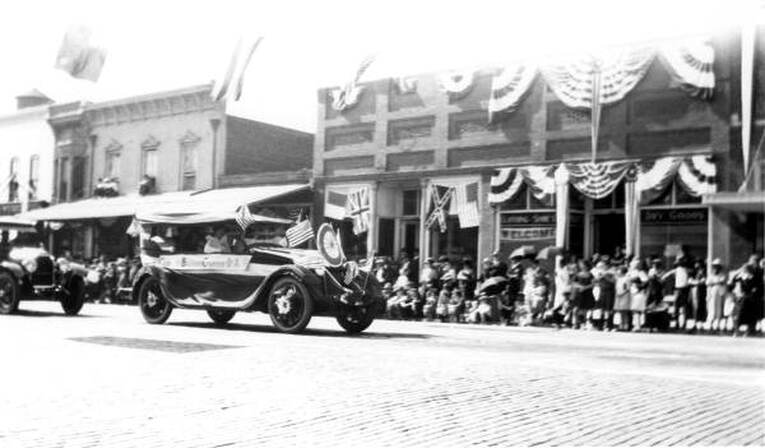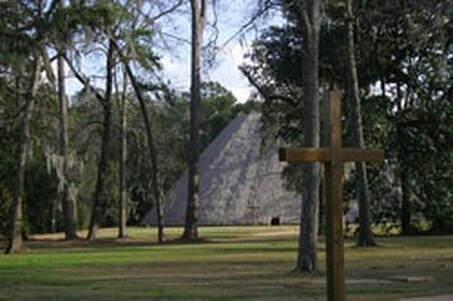Fort San Luis Chapter, NSDAR, of Wakulla was organized on September 22, 1953. Katherine Inglis Lewis, Organizing Regent, along with other junior members from the Caroline Brevard Chapter, NSDAR, created the Fort San Luis Chapter, NSDAR, for working women. To this day our chapter meetings are held on the second Saturday of each month from January through May and September through December. This makes it easier for chapter members who work to attend and participate.
In 1972, the National Board of Management approved the change of location of the Fort San Luis Chapter, NSDAR, from Wakulla to Tallahassee, Florida's capital city, where we are located today. The Fort San Luis Chapter, NSDAR, has a strong connection to Florida State University (FSU), as chapter members past and present, are students, faculty, employees, and wives of FSU staff.
For 70 years, Fort San Luis Chapter, NSDAR, has served Tallahassee's community and nation by promoting the objectives of the national society; education, patriotism and historic preservation.
In 1972, the National Board of Management approved the change of location of the Fort San Luis Chapter, NSDAR, from Wakulla to Tallahassee, Florida's capital city, where we are located today. The Fort San Luis Chapter, NSDAR, has a strong connection to Florida State University (FSU), as chapter members past and present, are students, faculty, employees, and wives of FSU staff.
For 70 years, Fort San Luis Chapter, NSDAR, has served Tallahassee's community and nation by promoting the objectives of the national society; education, patriotism and historic preservation.
HOW WE GOT OUR NAME
Fort San Luis, Tallahassee, Florida
San Luis de Talimali was the western military, administrative, and religious capital of Spanish Florida from 1656-1704. It was the lineal descendant of the village of Anhaica where Hernando de Soto located his winter camp of 1539-40 in the vicinity of the present-day capital complex. San Luis was moved to its present location by the Spaniards in 1656. Located on one of Tallahassee’s highest hilltops for defensive purposes, a series of blockhouses were built over the 48-year occupation of the community.
It was home to a deputy governor, garrison, and civilians—the only sizeable European population beyond St. Augustine. There were also more than 1500 Apalachee Indians who lived under the jurisdiction of San Luis. With the establishment of Charleston in 1670, the threat of English attacks on Spanish Florida intensified. That threat prompted the planning and construction of a formal military complex at San Luis during the 1690s. This consisted of a two-story blockhouse and defensive outer works including a stockade backed with a firing platform and bastions surrounded by a dry moat.
Although soldiers stationed at San Luis had homes nearby, they maintained a round-the-clock presence at the fort. From the time the stockade was built in 1703, it provided protection for the garrison and all of the village’s residents when the alarm sounded, an event which probably occurred with increasing frequency toward the end of the site’s occupation in 1704.
Written descriptions of Fort San Luis vary considerably concerning its size, configuration, and building materials. The only known drawing of the fort was made during a reconnaissance led by Admiral Antonio de Landeche in 1705, the year after San Luis was burned and abandoned by the Spaniards and their Apalachee allies.
Archaeology has revealed important information about military activities at San Luis, including the construction of early blockhouses and, eventually, a proper fort. Weaponry from the site reveals that military supplies were often outdated and that bows and arrows were never effectively replaced. Other artifacts recovered from the military complex are related to its building and maintenance, routine duty, and the eventual sequestering of the entire village.
In 1983, the State of Florida purchased fifty acres of the former mission capital including the military complex. Mission San Luis is open to the public Tuesday through Sunday, 10 a.m. to 4 p.m., and is closed Mondays, Thanksgiving Day, and Christmas Day.
San Luis de Talimali was the western military, administrative, and religious capital of Spanish Florida from 1656-1704. It was the lineal descendant of the village of Anhaica where Hernando de Soto located his winter camp of 1539-40 in the vicinity of the present-day capital complex. San Luis was moved to its present location by the Spaniards in 1656. Located on one of Tallahassee’s highest hilltops for defensive purposes, a series of blockhouses were built over the 48-year occupation of the community.
It was home to a deputy governor, garrison, and civilians—the only sizeable European population beyond St. Augustine. There were also more than 1500 Apalachee Indians who lived under the jurisdiction of San Luis. With the establishment of Charleston in 1670, the threat of English attacks on Spanish Florida intensified. That threat prompted the planning and construction of a formal military complex at San Luis during the 1690s. This consisted of a two-story blockhouse and defensive outer works including a stockade backed with a firing platform and bastions surrounded by a dry moat.
Although soldiers stationed at San Luis had homes nearby, they maintained a round-the-clock presence at the fort. From the time the stockade was built in 1703, it provided protection for the garrison and all of the village’s residents when the alarm sounded, an event which probably occurred with increasing frequency toward the end of the site’s occupation in 1704.
Written descriptions of Fort San Luis vary considerably concerning its size, configuration, and building materials. The only known drawing of the fort was made during a reconnaissance led by Admiral Antonio de Landeche in 1705, the year after San Luis was burned and abandoned by the Spaniards and their Apalachee allies.
Archaeology has revealed important information about military activities at San Luis, including the construction of early blockhouses and, eventually, a proper fort. Weaponry from the site reveals that military supplies were often outdated and that bows and arrows were never effectively replaced. Other artifacts recovered from the military complex are related to its building and maintenance, routine duty, and the eventual sequestering of the entire village.
In 1983, the State of Florida purchased fifty acres of the former mission capital including the military complex. Mission San Luis is open to the public Tuesday through Sunday, 10 a.m. to 4 p.m., and is closed Mondays, Thanksgiving Day, and Christmas Day.
|
IMPORTANT WEBSITES
|







